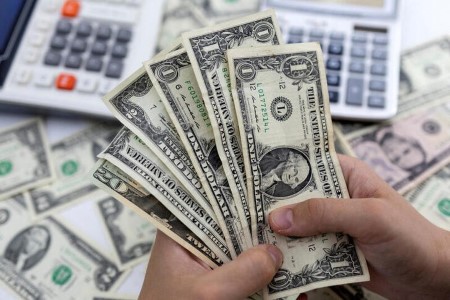




Policy Rate Updates: Double cut finale
 DOWNLOAD
DOWNLOAD

Monthly Economic Update: One for the road
 DOWNLOAD
DOWNLOAD

Inflation Update: Still low, still slow
 DOWNLOAD
DOWNLOAD


Treasury yields drop as inflation moderates

NEW YORK, March 31 (Reuters) – Two-year US Treasury yields were on track to post the largest monthly drop since 2008 on Friday while 10-year yields keyed in on the biggest drop in three years, after data showed inflation moderated in February and as investors sought out bonds for quarter-end.
Treasury yields have stabilized following sharp drops after the collapse of Silicon Valley Bank and Signature Bank this month.
But investors remain wary of any renewed stress in the banking system as they also wait to see how tighter lending standards resulting from the recent bank failures will affect the economy.
Data on Friday showing that inflation cooled in February, though it remained high enough to possibly allow the Federal Reserve to raise interest rates one more time this year.
The data “show that maybe we are seeing some sort of a slowing of the economy, or some kind of relief in the pressure from inflation,” said Michael Lorizio, senior fixed income trader at Manulife Investment Management in Boston.
Fed funds futures traders see slightly higher odds that the Federal Reserve will raise interest rates by 25 basis points when it meets on May 2-3, rather than leave them unchanged.
“The number remains elevated far from their target, far from where they envision it ending the year, so I do think that if the overall tone is supportive of a rate hike, then their preference would be to hike 25 basis points in May,” Lorizio said.
“That being said … there is so much data between now and May 3, none of us really know what that data will look like or what’s next in terms of headlines coming out of the banking sector,” Lorizio added.
Boston Fed President Susan Collins said on Friday that wherever the US central bank stops with its interest rate rises, maintaining that level for some time will be critical in helping to lower high inflation back to the 2% target.
Hopes that the Fed is closer to the end of its hiking cycle have boosted demand for bonds, while month- and quarter-end rebalancing also played a role in Friday’s bond rally.
Benchmark 10-year yields fell 6 basis points on the day to 3.494%. They have fallen by 42 basis points this month, the largest fall since March 2020.
Two-year yields fell 3 basis points to 4.067%. They are down 73 basis points this month, the largest drop since Jan. 2008.
The yield curve between two-year and 10-year notes was last at minus 58 basis points.
March 31 Friday 3:00PM New York / 1900 GMT
| Price | Current Yield % | Net Change (bps) | |
| Three-month bills US3MT=RR | 4.6475 | 4.7656 | -0.048 |
| Six-month bills US6MT=RR | 4.695 | 4.8867 | 0.001 |
| Two-year note US2YT=RR | 99-163/256 | 4.0666 | -0.032 |
| Three-year note US3YT=RR | 102-48/256 | 3.8325 | -0.049 |
| Five-year note US5YT=RR | 100-12/256 | 3.6146 | -0.048 |
| Seven-year note US7YT=RR | 100-94/256 | 3.5652 | -0.050 |
| 10-year note US10YT=RR | 100-12/256 | 3.494 | -0.057 |
| 20-year bond US20YT=RR | 100-176/256 | 3.825 | -0.065 |
| 30-year bond US30YT=RR | 98-216/256 | 3.689 | -0.057 |
| Be DOLLAR SWAP SPREADS | |||
| Last (bps) | Net Change (bps) | ||
| US 2-year dollar swap spread | 32.00 | -1.00 | |
| US 3-year dollar swap spread | 17.50 | 0.25 | |
| US 5-year dollar swap spread | 5.75 | 0.25 | |
| US 10-year dollar swap spread | -0.50 | 0.50 | |
| US 30-year dollar swap spread | -44.50 | 1.50 | |
(Reporting by Karen Brettell; Editing by Kirsten Donovan, Will Dunham and Jonathan Oatis)
This article originally appeared on reuters.com





 By Reuters
By Reuters